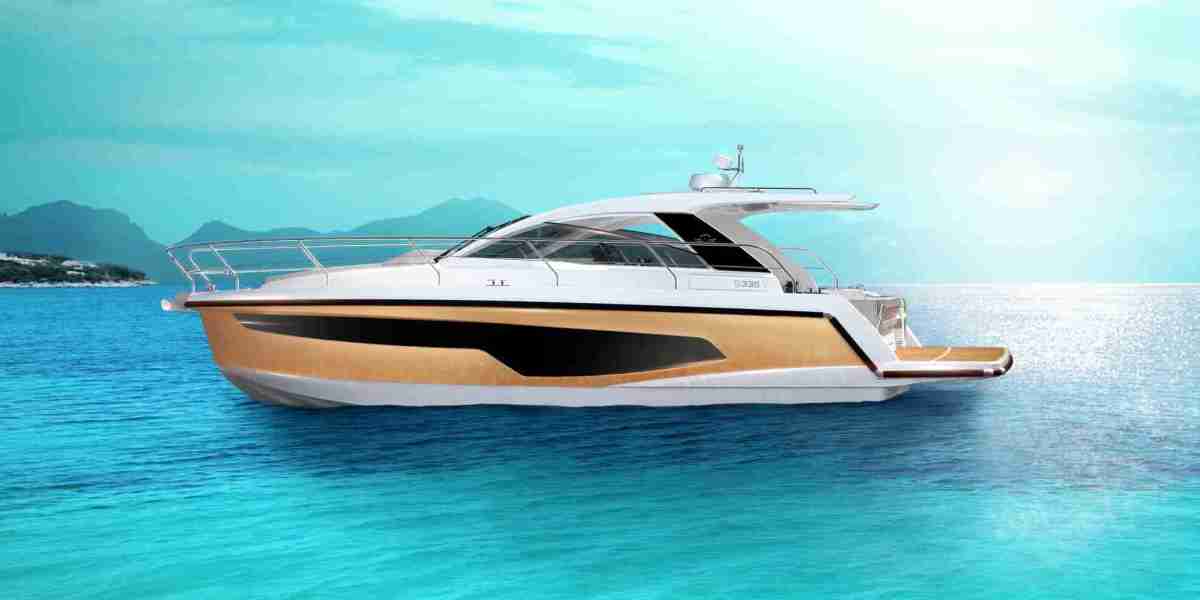The leisure power boat market has witnessed significant growth over the past few decades, driven by increasing consumer interest in recreational boating, technological advancements, and expanding infrastructure supporting marine leisure activities. This article explores the key factors shaping the development of the leisure power boat market, the challenges it faces, and future opportunities within the industry.
Market Overview
The leisure power boat market includes various types of motorized boats used primarily for recreational purposes, such as cruising, fishing, and water sports. These boats are typically categorized into:
Bowriders: Open-bow boats designed for day cruising and watersports.
Pontoon Boats: Flat-deck boats offering stability and comfort for leisure activities.
Cabin Cruisers: Boats equipped with living accommodations for overnight trips.
Yachts: Luxury boats designed for long-term leisure and high-end cruising experiences.
Personal Watercraft (PWC): Small, jet-powered boats for individual or small-group use.
Key Drivers of Market Growth
Several factors contribute to the expansion of the leisure power boat market:
1. Rising Disposable Income and Lifestyle Changes
As global economic conditions improve, rising disposable incomes have increased spending on leisure and recreational activities. High-net-worth individuals and middle-class consumers are more willing to invest in power boats for personal and family leisure activities.
2. Technological Advancements
Innovations in boat manufacturing, such as the development of fuel-efficient engines, electric propulsion systems, and smart navigation technologies, are making leisure power boats more attractive to consumers. Features such as GPS navigation, automated docking, and advanced entertainment systems enhance the user experience and drive demand.
3. Expansion of Marine Tourism
The growth of marine tourism in regions like North America, Europe, and the Asia-Pacific has led to an increased demand for leisure power boats. Destinations such as the Mediterranean, Caribbean, and Southeast Asia are becoming popular for yacht charters, boosting the sales and rentals of leisure boats.
4. Growth in Boat Clubs and Rental Services
The emergence of boat-sharing services and membership-based clubs has allowed more people to access leisure boating without the financial commitment of ownership. These services are particularly appealing to younger generations who prefer experiences over ownership.
5. Government Support and Infrastructure Development
Many governments are investing in marina developments, waterfront tourism, and policies that encourage recreational boating. Initiatives to clean water bodies and promote sustainable boating practices also contribute to market expansion.
Challenges Facing the Leisure Power Boat Market
Despite the positive growth outlook, the leisure power boat market faces several challenges:
1. High Costs of Ownership and Maintenance
Purchasing a power boat involves significant initial investment, and ongoing maintenance, insurance, and docking fees add to the overall cost. This can deter middle-income consumers from entering the market.
2. Environmental Concerns and Regulations
The leisure boating industry faces increasing scrutiny regarding its environmental impact. Fuel emissions, water pollution, and noise pollution are major concerns. Stricter regulations on emissions and fuel consumption could affect boat manufacturing and operational costs.
3. Seasonal Demand Fluctuations
Boating is largely a seasonal activity, with demand peaking in summer months and dropping in colder seasons. This cyclicality can impact sales and the profitability of rental and charter businesses.
4. Impact of Economic Uncertainty
The market is sensitive to economic downturns, as leisure and luxury purchases are often among the first expenses to be reduced during financial crises. Recessions or inflation can slow market growth.
Future Opportunities and Trends
Despite challenges, the future of the leisure power boat market looks promising, with several emerging trends shaping its development:
1. Growth of Electric and Hybrid Boats
With increasing awareness of sustainability, manufacturers are investing in electric and hybrid propulsion systems. Companies like Tesla, Arc Boats, and Candela are pioneering electric boat technology, offering eco-friendly alternatives to traditional fuel-powered models.
2. Expansion of Smart and Autonomous Boating
The integration of AI and IoT technology in power boats is set to revolutionize the market. Features such as self-docking capabilities, remote monitoring, and AI-assisted navigation are expected to become mainstream.
3. Increased Popularity of Shared Ownership Models
Fractional ownership and boat-sharing platforms are expected to gain popularity, making luxury boating more accessible to a broader audience. This trend mirrors the success of similar models in aviation and real estate.
4. Emerging Markets in Asia-Pacific and Latin America
Regions like China, India, and Brazil are witnessing growing interest in leisure boating, driven by rising incomes and government investments in marine tourism. The expansion of marinas and yacht clubs in these regions presents lucrative opportunities for manufacturers and service providers.
5. Sustainable Boating Practices
Consumers are becoming more environmentally conscious, leading to demand for sustainable materials, biodegradable cleaning products, and waste management systems in boat manufacturing and maintenance.
Conclusion
The leisure power boat market is poised for continued growth, driven by technological advancements, evolving consumer preferences, and expanding marine tourism. However, industry players must address challenges such as high costs, environmental concerns, and economic uncertainties. By embracing innovation, sustainability, and new business models, the industry can navigate these challenges and unlock new opportunities for growth in the coming years.




